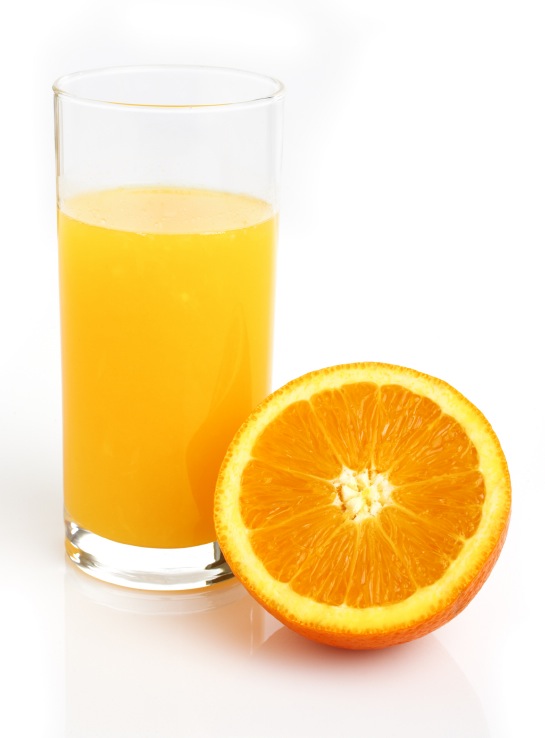 The FDA announced this week that it is implementing a “test and hold” policy for all imported shipments of orange juice to determine if they contain carbendazim (a fungicide, also called “MBC”). Under the law, a food cannot contain a pesticide residue unless the residue has an established tolerance level for that specific food. The Environmental Protection Agency (EPA) has not established a tolerance level for carbendazim residues in orange juice. The sudden crackdown on orange juice in particular highlights the questionable way that FDA and the EPA regulate pesticides in foods. Carbendazim is now at the forefront of FDA’s attention because EPA has not established a legal limit in oranges (or orange juice). FDA will therefore reject for importation orange juice with more than “trace” amounts of MBC, greater than 1.0 ppb – that’s “parts per billion” (with a “B”).
The FDA announced this week that it is implementing a “test and hold” policy for all imported shipments of orange juice to determine if they contain carbendazim (a fungicide, also called “MBC”). Under the law, a food cannot contain a pesticide residue unless the residue has an established tolerance level for that specific food. The Environmental Protection Agency (EPA) has not established a tolerance level for carbendazim residues in orange juice. The sudden crackdown on orange juice in particular highlights the questionable way that FDA and the EPA regulate pesticides in foods. Carbendazim is now at the forefront of FDA’s attention because EPA has not established a legal limit in oranges (or orange juice). FDA will therefore reject for importation orange juice with more than “trace” amounts of MBC, greater than 1.0 ppb – that’s “parts per billion” (with a “B”).
Here’s the real story: At the same time, the fungicide du jour, MBC, is permissible in apples, apricots and bananas. So, maybe FDA should stop all of those fruits too, because the concentration of another pesticide (thiophanate methyl – TPM) that is related to (and degrades down to) MBC is permitted in apples and bananas at 2.0 ppm (that’s “M” for “million”) and in Apricots at a whopping 15 ppm. So how does FDA test for the presence of TPM? By testing for MBC – the same pesticide that is causing all the imported OJ containers to stop at U.S. ports of entry.
Not Just Apples and Oranges
FDA will not be stopping apples, bananas and apricots due to the presence of 1000s more times (in concentration) of the same pesticide chemical simply because EPA has established those high tolerances. Of course, if FDA were worried about the safety of MBC, it would also have to stop grape juice (with an EPA tolerance of 5.0 ppm) and cherry juice (the heavy-hitter, with an EPA tolerance at a monstrous 20 ppm). Grape juice is used as the base juice for most fruit juices sold in the U.S.A. – and it has a tolerance for TPM, which is measured by testing for, you guessed it, carbendazim.
“Expect FDA to use these recent pesticide results in OJ as an excuse to stop, delay and test for MBC [carbendazim] in many other fresh and finished fruit and vegetable products”, said Benjamin England, former FDA Regulatory Counsel and founder of FDAImports.com. “While FDA is busy locking up the American orange juice supply, U.S. consumers will have to turn to other juices for their kids, like apple and grape juices. Apparently the fact that MBC is permitted at much (much) higher concentrations in those other juice products is lost on FDA.” The net result of FDA’s actions in this case will be to greatly increase the cost of orange juice, burden the American public with a gratuitous pesticide scare and unnecessarily bottleneck imports of orange juice and juice concentrates into the United States.
Importer Impact: What to Expect?
- Expect FDA to become “concerned” about other imported fruits, vegetables, juices, juice concentrates, etc. FDA will hold the entry and test it for carbendazim and other pesticides for residues that are obviously not unsafe.
- If FDA detects a pesticide residue for which there is no tolerance in a food or finds a residue that exceeds a tolerance, the agency will refuse the entry.
- If FDA finds an “illegal” pesticide residue or a residue that exceeds a tolerance the product is going on one of FDA’s automatic detention lists (import alerts).
Sources
http://www.gpo.gov/fdsys/pkg/CFR-2011-title40-vol24/pdf/CFR-2011-title40-vol24-sec180-371.pdf
http://www.fda.gov/ForConsumers/ConsumerUpdates/ucm283235.htm

